1979 - Sri Lanka - Flora and Fauna
10 Rupee note
The Central Bank of Ceylon
(CBSL) issued,
for circulation, in 1979 a series of currency Notes
based on the paintings by Laki
Senanayake on the theme Endemic Flora and Fauna of Sri Lanka dated
1979-03-26 and issued into circulation in 1980 August.
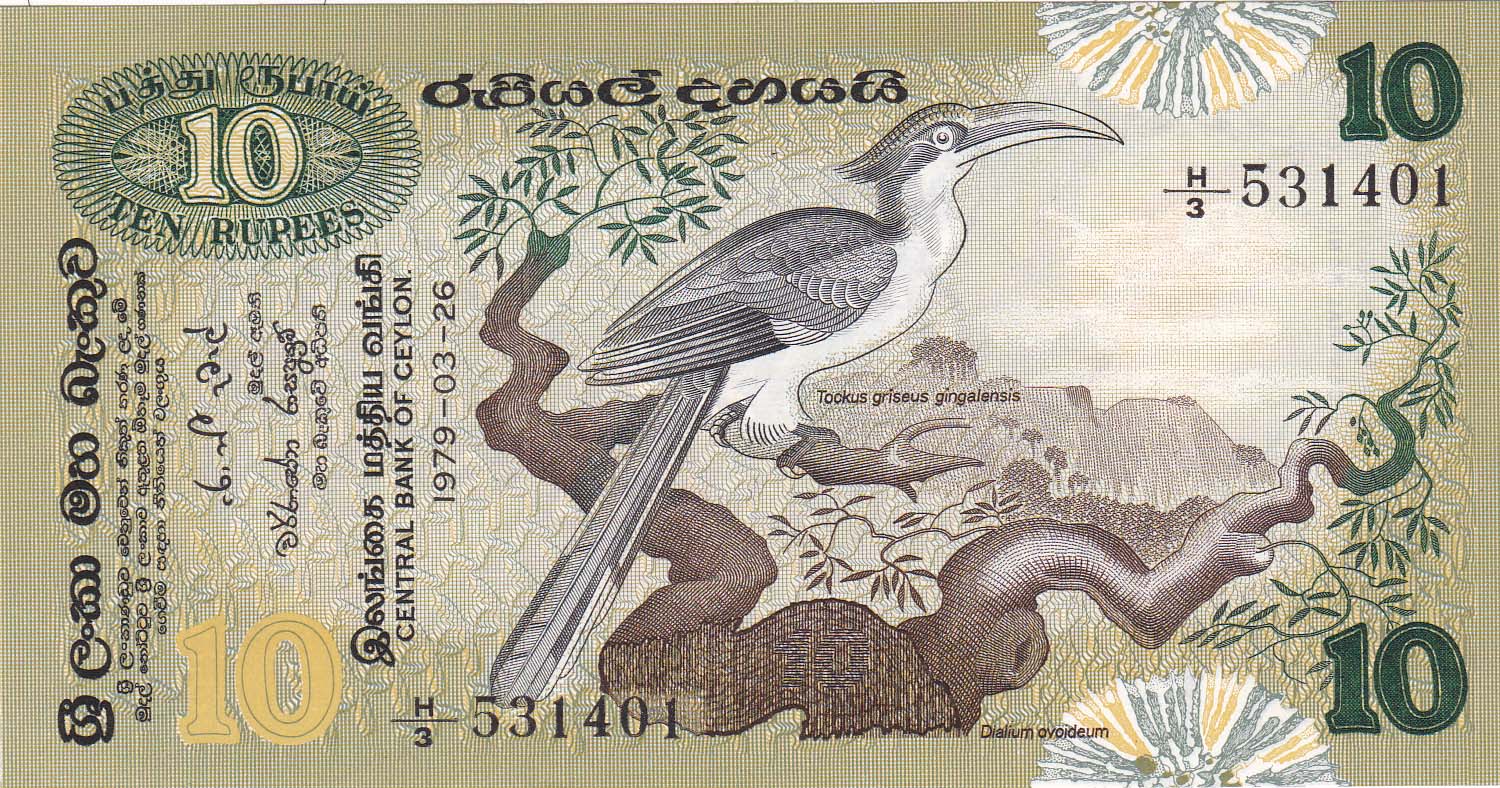
| 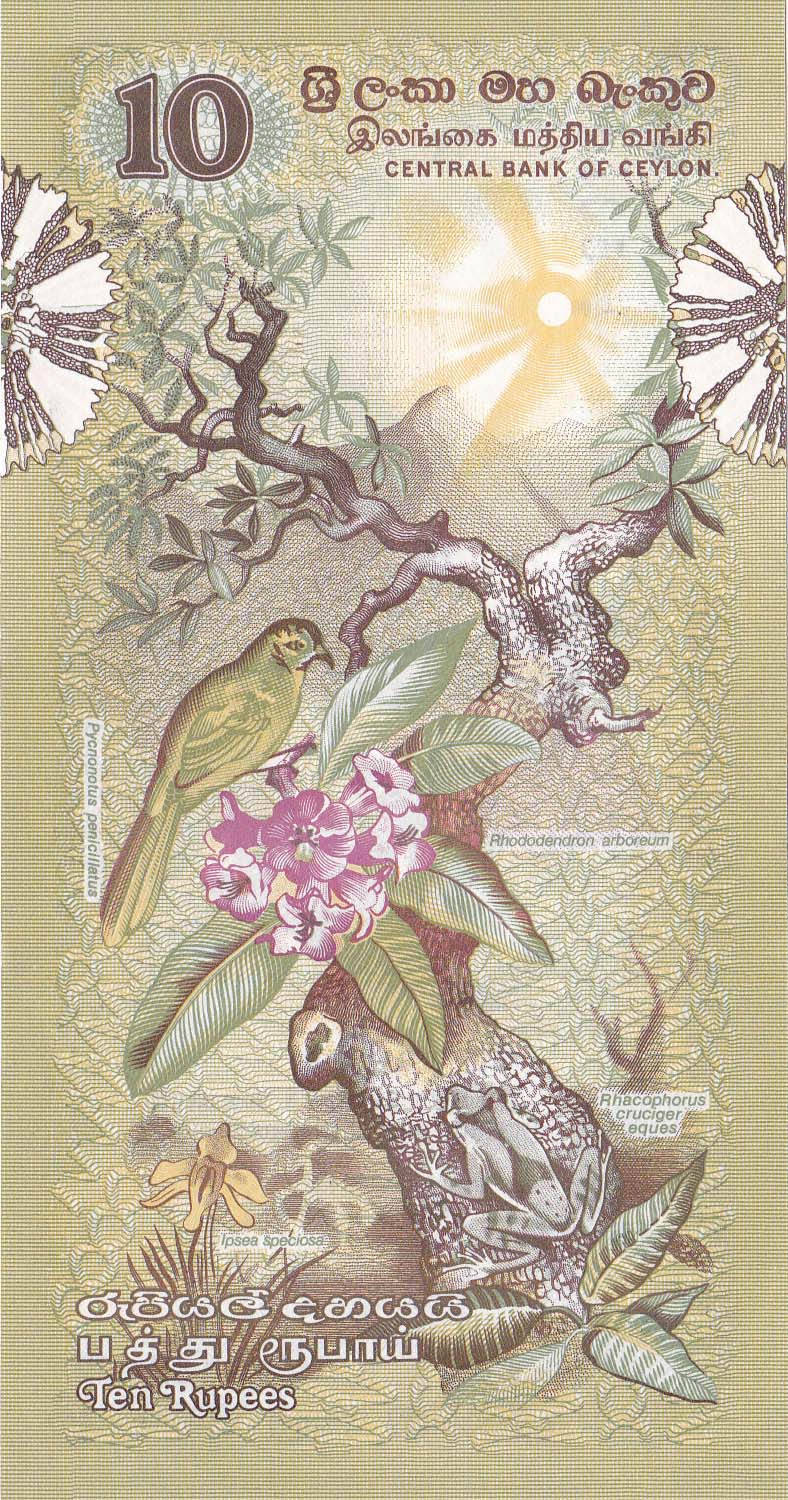
|
|
Click on image to see Note Security under Ultra-Violet illumination
|
| Flora and Fauna on both front and back are identified
by Scientific names printed next to it in English italic font.
| | Predominant Color |
:Front - Green with french-grey, sepia and yellow.
:Back - Green brown, pink and orange-yellow.
| | Size | : 127 x 67 mm
|
|
Front: Landscape
Numeric 10 at all four corners.
At top left of center the value
රුපියල් දහයයි in Sinhala.
பத்து ரூபாய் in Thamil,
and TEN RUPEES in English, in arcs above and below Numeric 10 on upper left.
Vertical on lower left in Sinhala,
ශ්රී ලංකා මහ බැංකුව,
with smaller Legality Legend in 3 lines
ශ්රී ලංකාණ්ඩුව වෙනුවෙන් නිකුත් කරන ලද මේ
මුදල් නෝට්ටුව ශ්රී ලංකාව ඇතුළත ඕනෑම මුදල් ගණනක්
ගෙවිම සඳහා නිතියෙන් වලංගුය
Two Facsimile signatures above මුදල් ඈමති, and
next මහ බැංකුවේ අධිපති.
இலங்கை மத்திய வங்கி in Thamil and
CENTRAL BANK OF CEYLON in English.
Date 1978-03-26
Horizontal Serial number on bottom left and upper right.
At the centre is a bird, the common Sri Lanka grey hornbill
(Tockus griseus gingalensis),
atop a velvet tamarind tree (Dialium ovoideum),
set off against a scenic background.
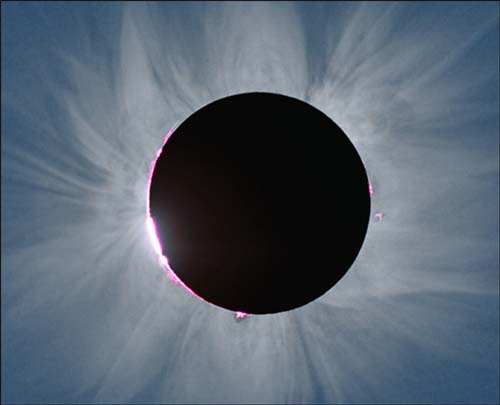 Back: Portrait
Back: Portrait
Numeric 10 at upper left.
ශ්රී ලංකා මහ බැංකුව
in Sinhala,
இலங்கை மத்திய வங்கி in Thamil
and CENTRAL BANK OF CEYLON in English,
in 3 lines of decreasing font size, justified on upper right.
රුපියල් දහයයි in Sinhala,
பத்து ரூபாய் in Thamil,
and TEN RUPEES in English,
in 3 lines of decreasing font size justified on lower right.
At left centre, is a bird, the yellow eared bulbul (Pycnonotus penicillatus),
atop a evergreen small tree (Rhododendron arboreum) with the largest red Rhododendron flowers.
At left bottom is a rare wild daffodil orchid (Ipsea speciosa), and
on the right side a common hour-glass tree-frog (Rhacophorus cruciger eques).
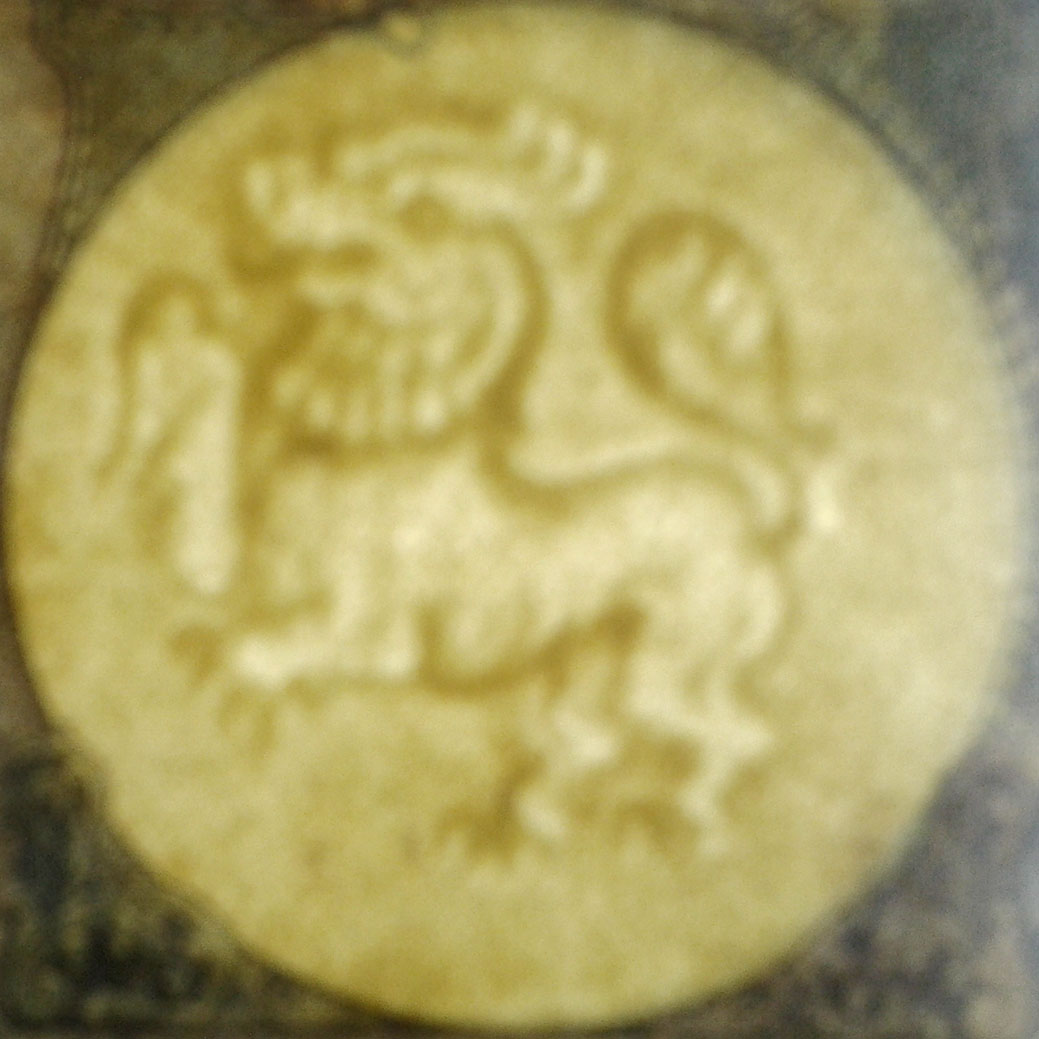 Watermark: Lion standing on hind legs facing left with bent
whip in right paw, Lion Lighter with outline including whip darker
than paper.
Watermark: Lion standing on hind legs facing left with bent
whip in right paw, Lion Lighter with outline including whip darker
than paper.
Security Thin polyester thread of 1 mm width embedded in note.
Micro-printing background a grid vertical lines distorted by non-uniform pattern.
UV Printing: Front: Signature, Date and Serial Numbers, and
lower left Numeric Value in Green. Outlines of Flag Lion with Sword in
raised right paw; Two Small at bottom and one on top, two larger between on right, in Orange.
Back: Greenish Yellow outer background and bird and Blue tree and
parts of semi circular Shell pattern in center upper both left and
right.
A Total Solar Eclipse image on upper right.
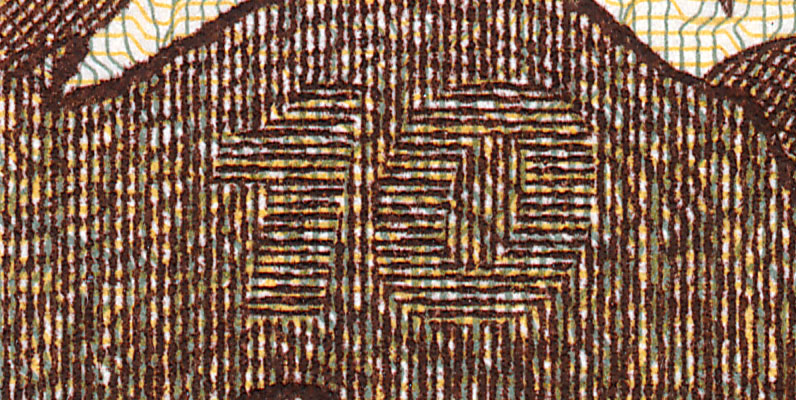 Latent image: In middle of the tree trunk lower center,
the Numeric value 10 written italic with horizontal lines on
vertical line background, as seen on this 1200 dpi scan on right.
Latent image: In middle of the tree trunk lower center,
the Numeric value 10 written italic with horizontal lines on
vertical line background, as seen on this 1200 dpi scan on right.
| Denom. | Date on
BankNote | Finance Minister | CBSL Governor | First Serial # | Mintage
in K
|
| Rs.10 | 1979-03-26 | Ronnie de Mel | Warnasena Rasaputram | H/1 000001 | 30,000
|
| Minister of Finance |
Governor
Central Bank of Ceylon |
1979-03-26
 |
| Ronnie de Mel | Warnasena Rasaputram |
|
This Note displays Endemic Sri Lanka Flora and Fauna,
The 2 on Front are found in Low altitudes Dry Zone. The 4 on Back are found in Mountain Altitudes.
In the Currency Issue book published by CBSL in 2021 for its 70th
Anniversary (page 100), claimed that the frog on the reverse was the
Common Hourglass Tree Frog (Polypedates cruciger) and not the
Mountain Tree Frog inscribed in the note as Rhacophorus cruciger
eques (new name Taruga eques), However according to a
herpetologist consulted by Michael Mayler, the confusion is because
both have an hourglass pattern on their back. The note has identified
correctly the frog, which is restricted to the Central Highlands.
Text edited from book Sri Lanka Currency of Recent Times 1938 - 1985
by Mr. T M U Sallay 1986 CBSL Colombo.
For collected details of the Flora and Fauna see
NotesCollector.
The note was scanned at 300 dpi and displayed at 50 dpi.


 Back: Portrait
Back: Portrait Watermark: Lion standing on hind legs facing left with bent
whip in right paw, Lion Lighter with outline including whip darker
than paper.
Watermark: Lion standing on hind legs facing left with bent
whip in right paw, Lion Lighter with outline including whip darker
than paper. Latent image: In middle of the tree trunk lower center,
the Numeric value 10 written italic with horizontal lines on
vertical line background, as seen on this 1200 dpi scan on right.
Latent image: In middle of the tree trunk lower center,
the Numeric value 10 written italic with horizontal lines on
vertical line background, as seen on this 1200 dpi scan on right.
